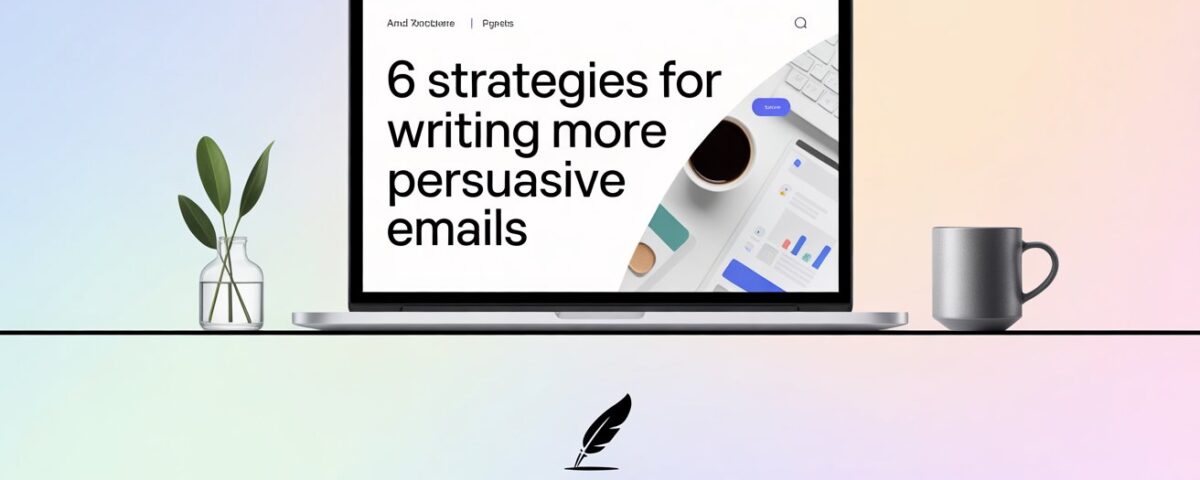
5 Proven Strategies to Generate More Leads
September 8, 2025
How to Improve Your Rankings on Google
September 8, 2025
Communication is the lifeline of sales and marketing. Successfully closing deals, providing value, explaining complexities — they all rely on your ability to express yourself clearly and persuasively.
You only have a very small window of opportunity to capture your reader’s attention and convince them to move one step closer toward a purchase or intended action.
Read on these techniques to ensure your emails pack the most punch.
Know your audience
It’s the foundation upon which your email’s effectiveness is built. If you don’t understand your audience — whether it’s someone who’s hesitant to buy or a happy customer you’d like to upsell — you won’t be able to write persuasively.
Social proof
Social proof describes the tendency to make choices based on other people’s decisions because we believe those decisions reflect the right choices.
Reference high-profile customers or the size of your customer base. If you’re trying to move a potential customer towards a purchase, try pointing out how many of their competitors and peers use your product.
Include a headshot in your email signature
When we make eye contact with people, we feel a subconscious sense of connection.
However, you can’t make actual eye contact through email, and by no means should you include a massive photo of yourself in the body of an email — that’ll just make people uncomfortable. But it can be easy to forget that there’s a person on the other end of your emails. Including a small headshot of yourself in an email signature is a subtle way to remind people that you’re human, too.
Agitate and solve the problem
Even if the person you’re emailing is already aware they have a problem in one area or another, it doesn’t mean they’re prepared to solve it. But emotion is a powerful thing. Whether it’s subconscious attachment to the old way of doing things causing inertia, or fear of making the wrong decision, your prospect won’t always warm to your product immediately.
To convince them, you’ll often have to talk about the problem in emotional terms, then swoop in with a solution to demonstrate how you can help.
While you should never attempt to over-exaggerate a business pain or spin one out of thin air, use the agitate-and-solve technique when it’s clear they haven’t fully conceptualized the cost of inaction.
Find out what matters to them. Then show how inaction will only worsen their current situation, and demonstrate why your product would help.
Include a reason
Giving people a reason why you need something — no matter how ridiculous — makes it far more likely they’ll do what you ask.
We wouldn’t recommend making up ridiculous excuses to get your prospects to sign a contract — that’s not good for anybody. But even providing a simple explanation — “I’d like to set up a meeting with you because I can help with X strategy” — could pay huge dividends.
Remind prospects it’s their choice
Nobody likes to be told what to do. And even if you’re not being pushy or aggressive, many people will still chafe at the suggestion that you know what’s best for them.
A simple reassurance that you’re not attempting to push your preferences or worldview onto them is powerful. Across 42 psychology studies involving 22,000 subjects, it’s been demonstrated that using a phrase like “But the decision is yours” could double the chances that someone would say yes to a request.
You don’t want to overuse this one — tempering every recommendation you make by reminding prospects they have no obligation to listen to you isn’t a great idea. But when you’re asking for a larger commitment or are dealing with a jumpy prospect, dropping in a reminder that you’re not here to force them into anything can be a powerful technique.
For more interesting and informative content, subscribe to our blog!


